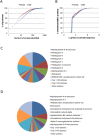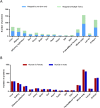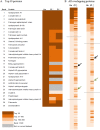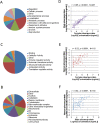Comprehensive and quantitative proteomic analyses of zebrafish plasma reveals conserved protein profiles between genders and between zebrafish and human
- PMID: 27071722
- PMCID: PMC4829857
- DOI: 10.1038/srep24329
Comprehensive and quantitative proteomic analyses of zebrafish plasma reveals conserved protein profiles between genders and between zebrafish and human
Abstract
Omic approaches have been increasingly used in the zebrafish model for holistic understanding of molecular events and mechanisms of tissue functions. However, plasma is rarely used for omic profiling because of the technical challenges in collecting sufficient blood. In this study, we employed two mass spectrometric (MS) approaches for a comprehensive characterization of zebrafish plasma proteome, i.e. conventional shotgun liquid chromatography-tandem mass spectrometry (LC-MS/MS) for an overview study and quantitative SWATH (Sequential Window Acquisition of all THeoretical fragment-ion spectra) for comparison between genders. 959 proteins were identified in the shotgun profiling with estimated concentrations spanning almost five orders of magnitudes. Other than the presence of a few highly abundant female egg yolk precursor proteins (vitellogenins), the proteomic profiles of male and female plasmas were very similar in both number and abundance and there were basically no other highly gender-biased proteins. The types of plasma proteins based on IPA (Ingenuity Pathway Analysis) classification and tissue sources of production were also very similar. Furthermore, the zebrafish plasma proteome shares significant similarities with human plasma proteome, in particular in top abundant proteins including apolipoproteins and complements. Thus, the current study provided a valuable dataset for future evaluation of plasma proteins in zebrafish.
Figures






References
-
- Kobayashi I. et al. Comparative gene expression analysis of zebrafish and mammals identifies common regulators in hematopoietic stem cells. Blood 115, E1–E9 (2010). - PubMed
Publication types
MeSH terms
Substances
LinkOut - more resources
Full Text Sources
Other Literature Sources
Molecular Biology Databases

